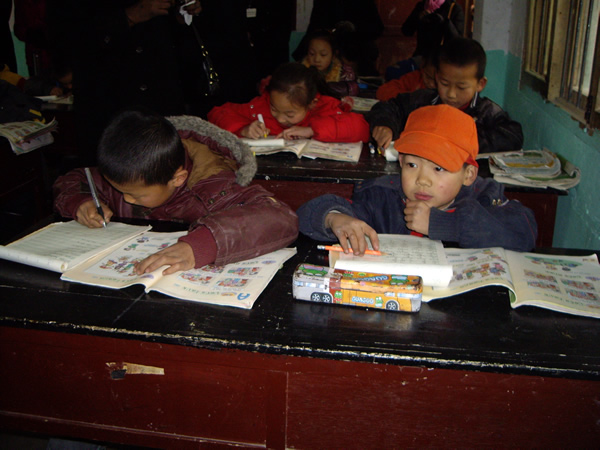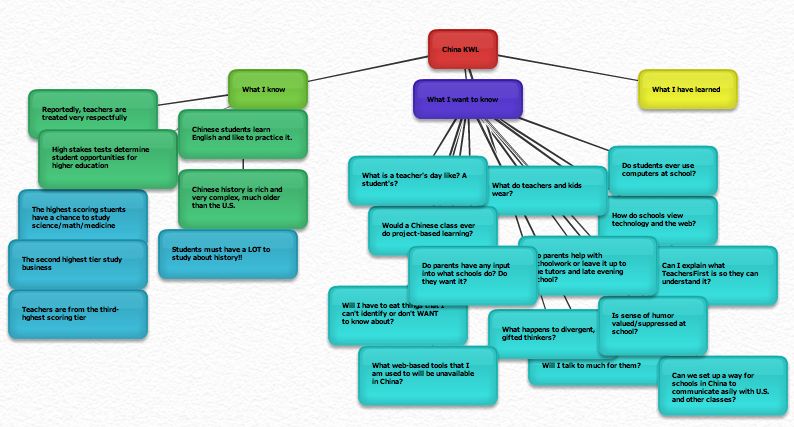China “snapsnacks”
Snapsnack: (I made this up) n. a quick impression, much like a handful of M&Ms or crackers to give you a small taste but nowhere near a “meal.” Snapsnacks also make your brain work 
There are still so many things I have not written about the China trip, so–just for teachers and kids– I am sharing some quick “snapsnacks” from China. My disclaimer: As with any short trip (11 days), my impressions may not be fair representations of China as a whole. Think about a visitor to your town. If he came on a certain snowy day, he would have one set of experiences, perhaps thinking that everyone always wears boots. If he stayed for a year, he would have a much truer sense of what your town/city/country is all about. For fun, try people-watching at your local grocery store and imagine what a one day visitor would say about your community!
Snapsnack 1: Students in China do not work in groups much. They do things all together as a class, often  reciting things out loud as a whole group. When one student is called on, he/she stands, hands behind the back, and looks at the front wall as he/she answers. We never saw a student raise his/her hand. I don’t know if this means they do not ever raise hands to ask questions/volunteer or if our visits just did not happen to see it. The students sit two-across or four-across with long aisles from the front to the back of the classroom. The only schools where we saw other seating arrangements were the international schools– where desks and tables were arranged many different ways. Do you think the way the seats
reciting things out loud as a whole group. When one student is called on, he/she stands, hands behind the back, and looks at the front wall as he/she answers. We never saw a student raise his/her hand. I don’t know if this means they do not ever raise hands to ask questions/volunteer or if our visits just did not happen to see it. The students sit two-across or four-across with long aisles from the front to the back of the classroom. The only schools where we saw other seating arrangements were the international schools– where desks and tables were arranged many different ways. Do you think the way the seats are arranged in your classroom affects the way you learn and behave?
are arranged in your classroom affects the way you learn and behave?
Snapsnack 2: Did you know that high quality jade changes color over many years of being worn against human skin? I guess it is the warmth that changes it. The hardest jade comes from a mountain that is only partially in China. It is called jadeite. People in China give jade, not diamonds, when they get engaged. What natural resources from your area are rare? How rare are they? How do people use them? What affects their value?
Snapsnack 3: The terracotta warriors were not always brown. When they were first excavated, they had brightly painted colors, but the colors faded very quickly once exposed to air. When the Chinese officials figured out that even the experts could not stop the fading, they stopped excavating the warriors. They are waiting to dig up the many thousands more (that they know are still underground) until they have found a technology to prevent the fading. They have consulted experts from around the world. What ideas do you have that might prevent the warriors’ colors from fading? How would you test your ideas?
Snapsnack 4: Most people in the Chinese villages have never had “land line” telephones. Your grandparents probably still have one, even if your family does not. The people in the villages do have cell phones. Knowing what it takes to put “land line” telephones into homes vs. making cell phones work in the countryside, why do you suppose most villagers never had landlines? What do you know about the economic level of people in the Chinese countryside villages? What happened in China during the years since cell phones were invented? Can you think of reasons why the villagers’ phones are mostly cell phones?
The picture below shows a village home. What can you tell about what jobs people have in villages?
Snapsnack 5: There are web sites that do not work in China because of censorship, but people still “see” them. YouTube does not work on computers, but it does work on smart phones that have web browsers. Some sites do not work, but people pay to “get around” the censorship using a proxy server service. The cost is about $50/year. Teachers even pay it so they can use some sites with their students. Do you know of censorship that people “get around” or rules that people ignore? What is your definition of a rule that is “made to be broken” vs. one that should be respected and followed?
I hope to share more soon. For now, stay warm — those of you in the northern hemisphere.













![By McKay Savage [CC-BY-2.0 (www.creativecommons.org/licenses/by/2.0)], via Wikimedia Commons](http://blog.teachersfirst.com/thinkteach/files/2010/10/sherpa.jpg)




